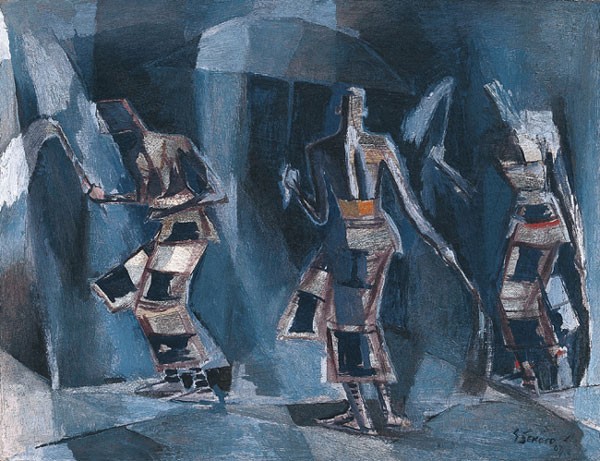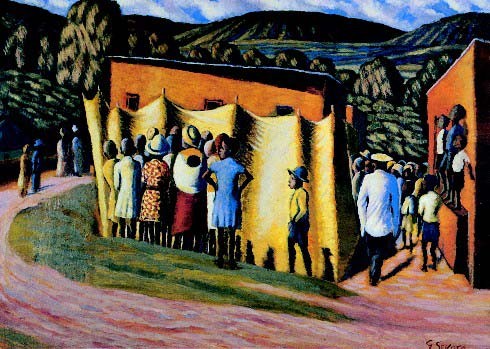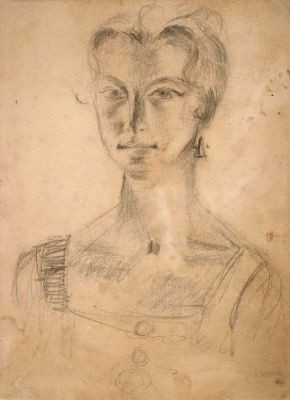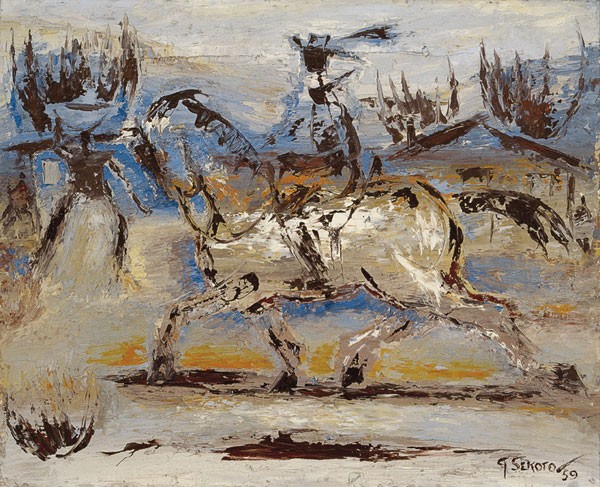Gerard Sekoto (1913-1993)
Get a Sekoto Certificate of Authenticity for your painting (COA) for your Sekoto drawing.
For all your Sekoto artworks you need a Certificate of Authenticity (COA) in order to sell, to insure or to donate for a tax deduction.
Getting a Sekoto Certificate of Authenticity (COA) is easy. Just send us photos and dimensions and tell us what you know about the origin or history of your Sekoto painting or drawing.
If you want to sell your Sekoto painting or drawing use our selling services. We offer Sekoto selling help, selling advice, private treaty sales and full brokerage.
We have been authenticating Sekoto and issuing certificates of authenticity since 2002. We are recognized Sekoto experts and Sekoto certified appraisers. We issue COAs and appraisals for all Sekoto artworks.
Our Sekoto paintings and drawings authentications are accepted and respected worldwide.
Each COA is backed by in-depth research and analysis authentication reports.
The Sekoto certificates of authenticity we issue are based on solid, reliable and fully referenced art investigations, authentication research, analytical work and forensic studies.
We are available to examine your Sekoto painting or drawing anywhere in the world.
You will generally receive your certificates of authenticity and authentication report within two weeks. Some complicated cases with difficult to research Sekoto paintings or drawings take longer.
Our clients include Sekoto collectors, investors, tax authorities, insurance adjusters, appraisers, valuers, auctioneers, Federal agencies and many law firms.
We perform Gerard Sekoto art authentication, appraisal, certificates of authenticity (COA), analysis, research, scientific tests, full art authentications. We will help you sell your Gerard Sekoto or we will sell it for you.

Gerard Sekoto was a South African artist and musician. He is recognized as the pioneer of urban black art, social realism, and more recently as the father of South African art and of his 8 daughters and 3 sons. He has had exhibitions in Paris, Stockholm, Venice, Washington, Senegal as well as in South Africa.

Sekoto was born on the 9 December 1913 at the Lutheran Mission Station in Botshabelo near Middelburg, Eastern Transvaal (now known as Mpumalanga). As the son of a missionary, music was a part of his life, and he was introduced to the family harmonium at an early age.

On graduating as a teacher from the Diocesan Teachers Training College in Pietersburg he taught at a local school, Khaiso Secondary, for four years. During this time he entered an art competition organized by the Fort Hare University, for which he was awarded second prize.
In 1938 at the age of 25 he left for Johannesburg to pursue a career as an artist. He lived with relatives in Gerty Street, Sophiatown. He held his first solo exhibition in 1939. In 1940 the Johannesburg Art Gallery purchased one of his pictures; it was to be the first picture painted by a black artist to enter a museum collection. In 1942 he moved to District Six in Cape Town where he lived with the Manuel family. In 1945 he moved to Eastwood, Pretoria.

In 1947 he left South Africa to live in Paris under self-imposed exile. The first years in Paris were hard, and Sekoto was employed as a pianist purely by chance at l’Echelle de Jacob (Jacob’s ladder), a trendy nightclub that had reopened for business after World War II. Here he played jazz and sang ‘Negro Spirituals’, popular French songs of the period and some Harry Belafonte. Music became the way that he could pay his living and art school expenses.
Between 1956 and 1960, several of Sekoto’s compositions were published by Les Editions Musicales. Sekoto played piano and sang on several records. He composed 29 songs, mostly excessively poignant, recalling the loneliness of exile, yet displaying the inordinate courage of someone battling to survive in a foreign cultural environment. In 1966 he visited Senegal for a year.

Sekoto’s paintings became political in the 1970s due to apartheid in his home country. In 1989 the Johannesburg Art Gallery honoured him with a retrospective exhibition and the University of Witwatersrand with an honorary doctorate. He died on 20 March 1993 at a retirement home outside Paris. Still wondering about an African painting in your family collection? Contact us…it could be by Gerard Sekoto.
Reviews
1,217 global ratings
5 Star
4 Star
3 Star
2 Star
1 Star
Your evaluation is very important to us. Thank you.
